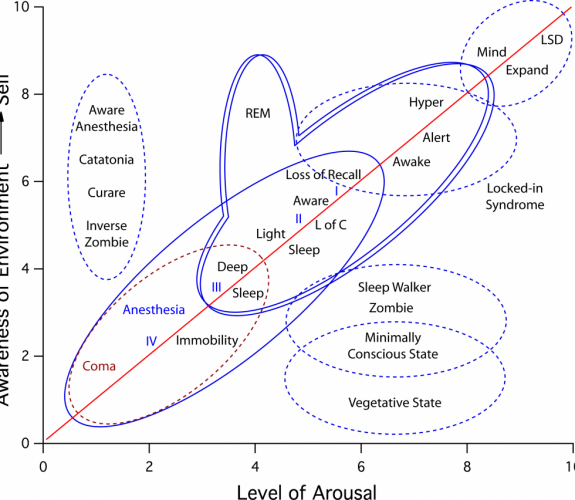Consciousness has multiple components, but philosophical, psychological, and physiological definitions remain works in progress. Laureys and coworkers have provided a useful graphical representaion of the more important components of consciousness, and of aberrant or pathological states of consciousness.
Awareness (the content of consciousness) is positively correlated to arousal (the level or degree of consciousness). Humans experience a continuum along this correlation (red line), ranging from ~ 3,3 (x,y) to 9,9 (bounded by double lines), also including a paradoxical dream state during REM sleep (~ 3,5 to 5,9). Pathological states (dashed ovals) include a range of conditions that often occur when awareness and arousal become uncorrelated, or exist at the extremes of the correlation continuum (i.e. < 3,3 or > 9,9). Anesthesia (single line oval) spans a wide range of the correlation continuum and can be quantified using loss of response metrics, such as loss of recall (6,6) and loss of consciousness (L of C; 5,5) as well as other measures like EEG and evoked potentials for deeper levels of anesthesia, such as loss of response to surgical pain (immobility; < 2,2). It is possible to quantify some of these levels using Guedel’s classifications (I, II, III to IV) or by using name or face recognition EEG, evoked potentials, fMRI and neurological examination. Note that some normal physiological, pathological and anesthetic states appear to coexist along the continuum, such as: Deep Sleep, Coma, and Anesthesia, so there remain to be discovered mechanistic differences that discriminate these states at a more fundamental level. An important goal of neuroscience is to characterize conscious states at the level of circuits of neurons, synapses and molecules. Modified from Laureys et al 2007 (Consiciousness and Cognition).


